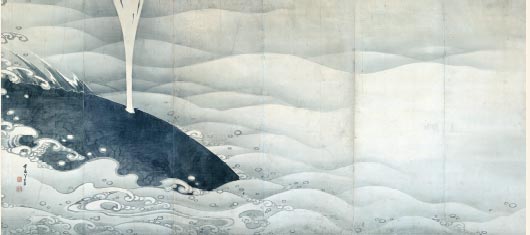 |
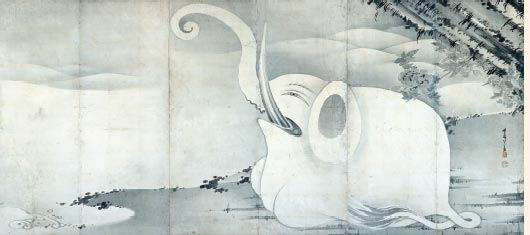 |
Ito Jakuchu, Elephant and Whale Screens Ink on paper, pair of six-fold screens Edo Period (1797) Dimensions: 159.4 × 354.0 each Miho Museum |
|
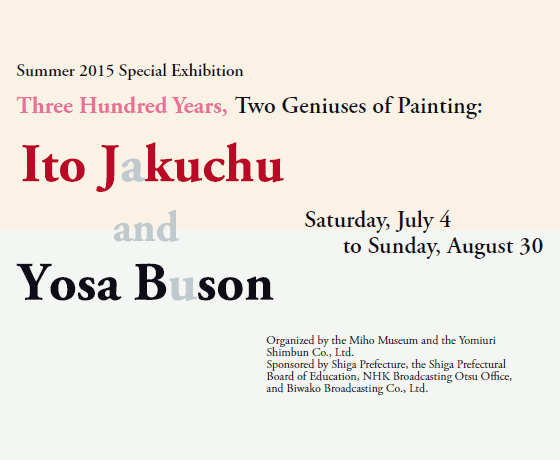 |
The year 1716 was a turning point in Edo Period art. It saw the death of
the great Ogata Korin and the birth of two other
geniuses of painting: Ito Jakuchu and Yosa Buson. Born
the eldest son of a grocer in Kyoto, Ito Jakuchu (died
1800, aged 85) took over the family business when he was
23, but in his mid-30s became a Zen Buddhist
practitioner, earning the title of lay brother. He
retired from business to paint full-time at age 40. Meanwhile, Yosa Buson (died 1783, aged 68) was born into a merchant household in Osaka, and went to Tokyo around the age of 20 to learn haiku. His teacher died when he was 27, and Buson set off on a ten-year journey through the wilderness of northern Honshu. Afterwards, he moved to Kyoto at around the age of 40 and was active as both a poet and a painter. |
|
Jakuchu is renowned for his vividly colored bird-and-flower
and animal paintings, Buson for mountainous landscapes in
the style of Chinese literati paintings and simply yet
exquisitely executed illustrated haiku. While at first
glance the works of the two have little in common, both drew
inspiration from works of art imported into ostensibly
“closed” Edo Japan through the port of Nagasaki from China
and Korea. This exhibition celebrates the 300th anniversary of the birth of Ito Jakuchu and Yosa Buson, and in addition to the work of the two masters, also features pieces by their contemporaries exhibited at the museum for the first time, creating a fascinating window into the vibrant Kyoto of the 18th century when they lived. |
||
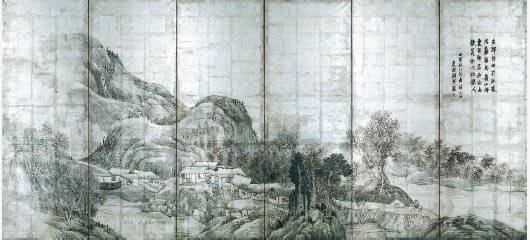 |
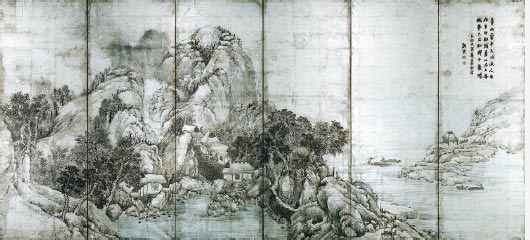 |
Yosa Buson, Landscape Screens
Ink and color tint on silver-coated paper Edo Period (1782) Dimensions: 166.9 × 363.7 each Miho Museum
Ink and color tint on silver-coated paper Edo Period (1782) Dimensions: 166.9 × 363.7 each Miho Museum